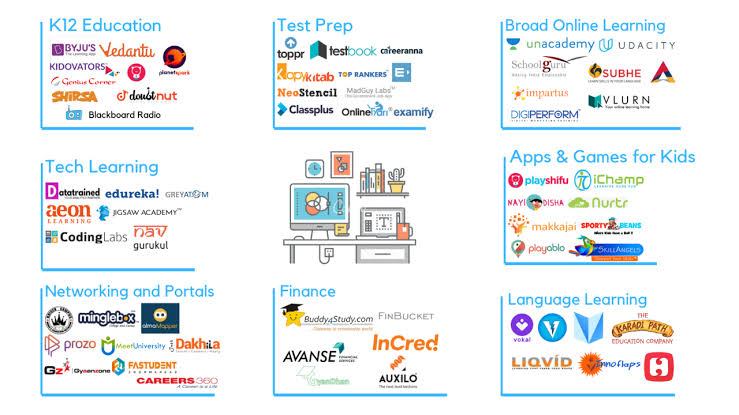EdTech in India: India’s ed-tech startups received the most support in 2020, with all of them seeing increases in customers, valuations, and funding. India’s education sector is expected to expand from $117 billion to $225 billion by FY25, according to a study by PGA Labs and IVCA.
India’s educational technology:
There are approximately 3,500 EdTech startups in India. By the end of 2018, the industry had raised $700 million in support. According to the KPMG study Online Education in India: 2021, the market could be worth $1.96 billion by 2021. This technology will take you to a page with more detailed information.
Students need on-demand learning:
Students need on-demand learning because they often have to juggle internships and studies at the same time while taking professional exams. Classroom schedules are seldom associated with their work schedules. Students benefit from on-demand training because it allows them to access classes and research materials whenever they want.
The EDTech Revolution: For a long time, Indian educational institutions have followed the “factory model,” which means that all students follow a standard and standardized learning methodology. The factory model ignores the fact that each student is unique and learns at his or her own pace. They also have their interpretation of the same concept. What works for one learner can not work the same way for another. As a consequence, variations in overall learning outcomes are common in classroom-based learning.
EdTech is a crucial connection between increased student enrollment (participation) and improved learning. Students can now improve their knowledge base and clear their doubts through online learning portals, programs, and institutes, thanks to EdTech platforms. EdTech platforms deliver a broad variety of industry-relevant courses, from short-term qualification courses to long-term undergraduate and postgraduate programs.
By combining theoretical learning with practical experiments, case studies, and assignments, modern EdTech solutions, and learning programs are designed to help students improve their competencies, critical thinking, and creative abilities.
EdTech’s main goal is to develop training programs and courses that are highly applicable to current events.
Expert educators are in high demand:
In the past, a single professor could only accommodate a class of 100 students. EdTech makes it possible for educators to reach a large number of students. There is no longer a need for a physical space where students and teachers can gather for classroom sessions. On-demand video streaming allows students to access courses at any time, from any place, and on any device.
All of these solid reasons, as well as a slew of others, are propelling India’s EdTech revolution forward.
The NEP 2020 acknowledges the need to capitalize on technology’s benefits while still recognizing its threats and dangers. It stresses the importance of well-designed pilot studies to assess the advantages of online learning. To meet challenges, existing digital channels will be streamlined and expanded to deliver high-quality education to everyone. To that end, the Digital India Campaign will be prioritized, and teachers will receive the necessary training to become successful online educators.
In August 2020, the education technology startup Byju’s, which is owned by Think and Learn, paid $300 million for the coding platform WhiteHat Jr. The aim was to introduce students to the rapidly growing field of coding in education technology. This is just one indication of how quickly the industry is growing.
Conclusion: Technology-based learning systems are unquestionably the way of the future of education. What was once considered optional is increasingly becoming a prerequisite for creating a learning environment that encourages learners to acquire industry-relevant skills. With India’s educational landscape being swept by the EdTech revolution, it’s safe to say that governments, educational institutions, teachers, parents, and students are all becoming more involved in emerging technology. India’s EdTech industry will see a major rise in funding, innovation, and adoption in the coming years.
What’s more surprising is that India was ranked 120th in terms of ICT adoption, despite being one of the world’s largest markets for the Internet and emerging technologies!

